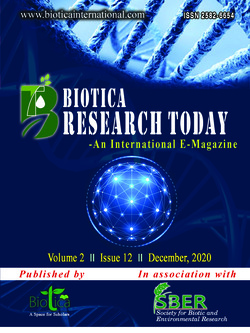
Azolla: Empowers Women Rural Farmers
Geeta Mohan*
Dept. of Agriculture, Jagan Nath University, Jaipur, Rajasthan (303 901), India
O.P. Sharma
Dept. of Agriculture, Jagan Nath University, Jaipur, Rajasthan (303 901), India
Manjeet Kaur
Dept. of Agriculture, Jagan Nath University, Jaipur, Rajasthan (303 901), India
DOI: NIL
Keywords: Azolla, Biofertilizer, Livestock feed, Micronutrients
Abstract
Azolla is commonly known as mosquito fern, duckweed fern, fairy moss, and water fern, is a small free floating aquatic fern native to Asia, Africa, and the America. It grows in swamps, ditches, and even in lakes and rivers where the water is not turbulent. The name Azolla is derived from the two Greek words, Azo (to dry) and Ollyo (to kill) thus reflecting that the fern is killed by drought. Azolla-Anabaena is a symbiotic complex in which the entophytic blue-green algae Anabaena zollae lives within the leaf cavities of the water fern Azolla. It is important to keep Azolla at the rapid multiplication growth phase with the minimum doubling time. Periodic application of cow-dung slurry, super phosphate and other micro and macro nutrients except nitrogen prevents plants from reaching sporulation stage. Biomass should be removed every day or on alternate days to avoid overcrowding. PH level should be tested periodically and maintained regularly.
Downloads
not found
Reference
Anjuli, P., Prasanna, R., Singh, P. K., 2004. Biological significance and its utilization in agriculture. Proc. Indian Natl. Sci. Acad. 70, 299-333.
Das, D., Sikdar, K., Chetterjee, A. K., 1994. Potential of Azolla pinnata as biogas generator and as a fish feed. Indian J. Environ. Health 36, 186-191.
Jain, S.K., Vasudevan, P., Jha, N.K., 1989. Removal of some heavy metals from polluted water by aquatic plants: studies on duckweed and water valvet. Biol. Wastes 28, 115-126.
